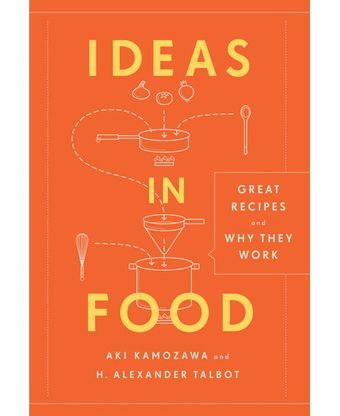
Presenting Pearls of Wisdom -- in conjunction with FOOD52's Recipe Writing Week, we'll be bringing you pro tips from the food world's best chefs and writers. Stay tuned for more every day this week.
You've seen Aki Kamozawa and H. Alexander Talbot on FOOD52 before -- chef Anita Lo judged their book Ideas in Food in the 2012 Piglet, and Amanda cooked up their tapioca flour chocolate pudding. They're known for their precise, unique recipes that use unexpected techniques or ingredients -- like a no-knead brioche, or potato chip pasta -- to produce amazing, consistent results.
True to form, their recipe writing tips are all related to precision and reproducible results -- we'll let them take it away:
1. Take good notes as you're cooking. Although you may think you'll remember the small steps that make a big difference in the finished dish, they are surprisingly easy to forget. Be sure to include notes about what doesn't work because that is the information that will help you create a successful recipe.
2. Realize that every recipe you write will need editing. Your best bet is to walk away for at least an hour and work on something else before trying to re-read it. When you've just cooked something and written it up, the recipe will seem easy to follow even if you've missed a step because the entire process is imprinted in your mind. It's better to distance yourself and then read it with fresh eyes to see what's missing, misspelled, or unclear.
3. Be aware of what can go wrong so that you can help readers avoid pitfalls. For example, if you don't know that butter solids brown unevenly and will burn in spots, you may not remember to tell readers to stir the butter as it browns so that it cooks evenly.
4. Leave nothing to chance. We like to list our measurements by weight in grams and be very specific about the steps needed to complete a technique. We try to make sure that our recipes are clear, concise and precise. Too much information can be as confusing as not enough. (Rose Levy Beranbaum prefers metrics, too.)
5. Use your head notes wisely to communicate helpful information that may not have a place in the body of a recipe. Depending on the dish, we like to add a bit of context or food science or background information on ingredients to help draw people in and get them excited about making the recipe. (Ruth Reichl is a fan of taking care with headnotes, as well.)
We'll be sending our Pearls of Wisdom series off into the sunset with Patricia Wells, cookbook author and longtime Francophile, at 1:00pm. Til then!
If you're just catching up on Pearls of Wisdom, don't miss advice from Ruth Reichl, JJ Goode, Rose Levy Beranbaum, Charlotte Druckman, and Deb Perelman.
I'm Nozlee Samadzadeh, a writer, editor, farmer, developer, and passionate home cook. Growing up Iranian in Oklahoma, working on a small-scale organic farm, and cooking on a budget all influence the way I cook -- herbed rice dishes, chicken fried steak, heirloom tomato salad, and simple poached eggs all make appearances on my bright blue kitchen table. I love to eat kimchi (homemade!) straight from the jar and I eat cake for breakfast.



See what other Food52 readers are saying.